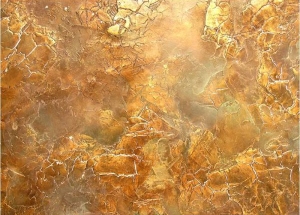The organization is engaged in finishing the apartments on a turn-key basis, http://remont-snabplus.ru/otdelka-kvartir, can offer the customer to choose the desired decorative decoration of the walls, to determine the choice you need certain knowledge. In this article, we will look at how to decorate walls with decorative plaster and its types, as well as the technology of applying plaster - Venetian and textured
Types of decorative plaster
To date, the most popular types of decorative plaster are Venetian and textured.
Venetian plaster is made from natural natural lime. It has become so popular due to its unique properties - when applied to walls with the use of special technology creates the effect of this polished marble. It can be painted with almost any desired color.
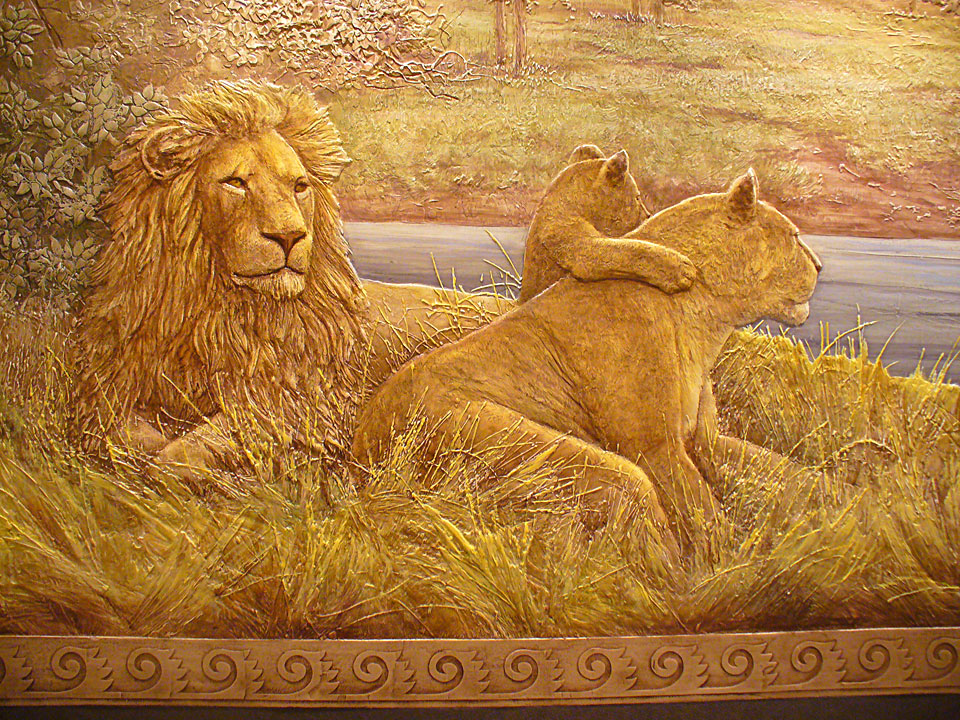
Textured plaster is a mixture based on synthetic binders containing various fillers (fine particles of various minerals, fibers of natural fabrics). After drying, when applied to walls, such plaster acquires the texture that is characteristic of the filler in its composition. It looks very original, and also helps to hide the various defects of the walls on which it is applied.
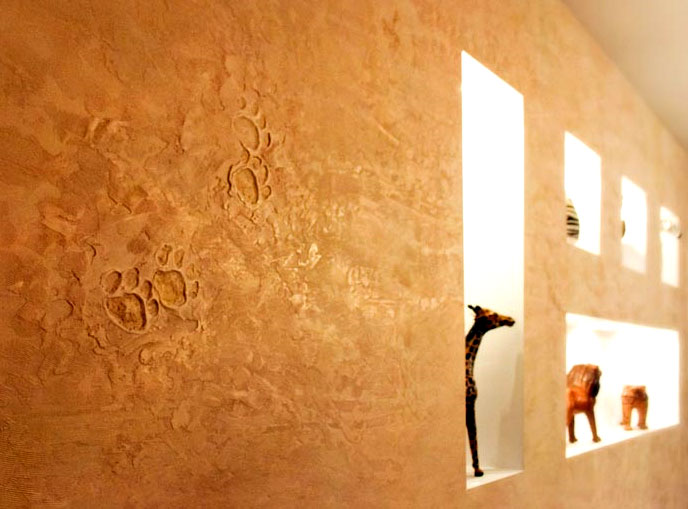
Venetian plaster
First you need to prepare the ground for the application of plaster - thoroughly and carefully putty all the irregularities of the working wall (as the Venetian plaster is applied quite thinly and almost does not hide any defects), clean the wall from contamination, tightly close doors and windows to prevent drafts and sudden changes temperature, and also cover the skirting board with paper or cellophane.

If you intend to use in the work of Venetian plaster in different colors - one darker and one lighter, and apply them one above the other, is separated by a wall, measured to draw a line at a height of about one-third of the floor, because if you divide the wall 50/50, then it will seem lower.
To separate the treated surface from the untreated, on the border of their separation, stick a wide paint tape.
Consumables and tools for work:
- plasterwork Venetian decorative;
- small capacity to hold plaster in hand during operation;
- venetian spatula (12.5 cm);
- steel spatula for polishing (with sanded blunt edges);
- coarse-grained sandpaper;
- clean dry towel;
- wide paint tape.
At the beginning of the work put a small portion of the plaster, taking it from a large main tank, in a small ad (bath), in order the better to keep it in your hand during work and scrape with a spatula the excess plaster in the bath;
Immediately begin applying the Venetian plaster with a spatula from the top corner, making arbitrary strokes, holding the spatula at an acute angle to the wall (about 20 *). Do not try to impose plaster immediately with a thick layer and on a section of the wall with a size of more than one meter. Once (and this happens right before your eyes), the plaster will dry up, remove excessively large and coarse tubercles, preventing them from completely withering. After applying the first layer of Venetian decorative plaster, the treated wall should be visible.
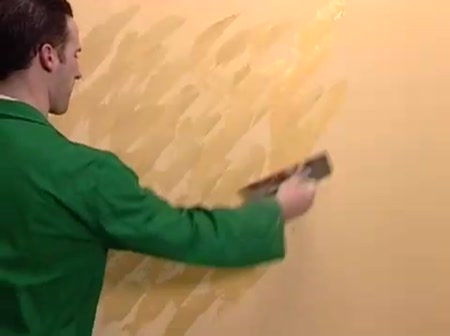
We do a little break in work. After a lapse of two or four hours, when the first layer of plaster dries more or less (you can touch it with your hands), apply the next, second layer. There is not necessarily the same uniform application as we did the first time, we fill in those places where the wall shows through particularly strongly. Apply the plaster, turn the spatula from right to left and from left to right, holding it at an angle of about 450.
After a day, when our plaster dried well enough, it is necessary to sand the wall using a large nazhdachku. Then, cleaning our plaster from the formed building dust, it is necessary to wipe its surface, and then thoroughly vacuum both the floor and the walls themselves, using a brush head.
How to iron it with a spatula plaster surface, holding a spatula across the surface of a wall, making a dramatic sweeping hand movements, and then polish it using a steel trowel. On the finished dried plaster surface, draw a few times with the sharp edge of the spatula with long, sweeping movements.
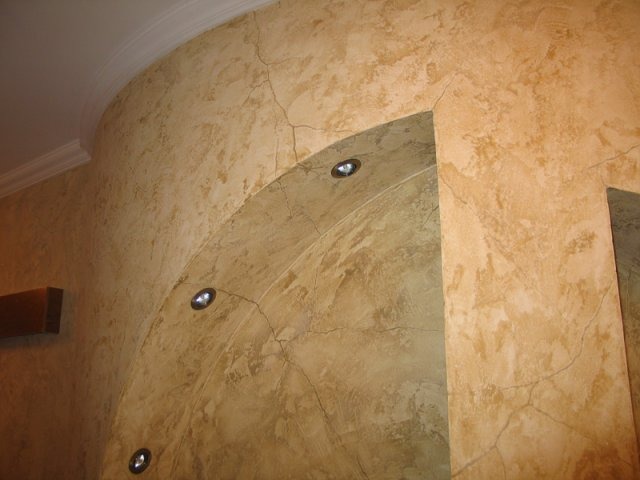
You can remove paint from the walls of the walls, doing it very carefully and trying not to spoil our wonderful Venetian plaster. If the tape is separated difficult, you can apply a sharp spatula, cutting them our paint tape.
Textured plaster
Textured plaster, as well as Venetian plaster, is used to achieve decorative effect, it is applied after ordinary plaster and completes the finishing works on the walls. Textured plasters come in several forms and are not only using a specific binder (cement, silicone resin, acrylic resin, liquid potassium glass), but also in structure (a fur coat, woodworm, lamb, plastering paint).
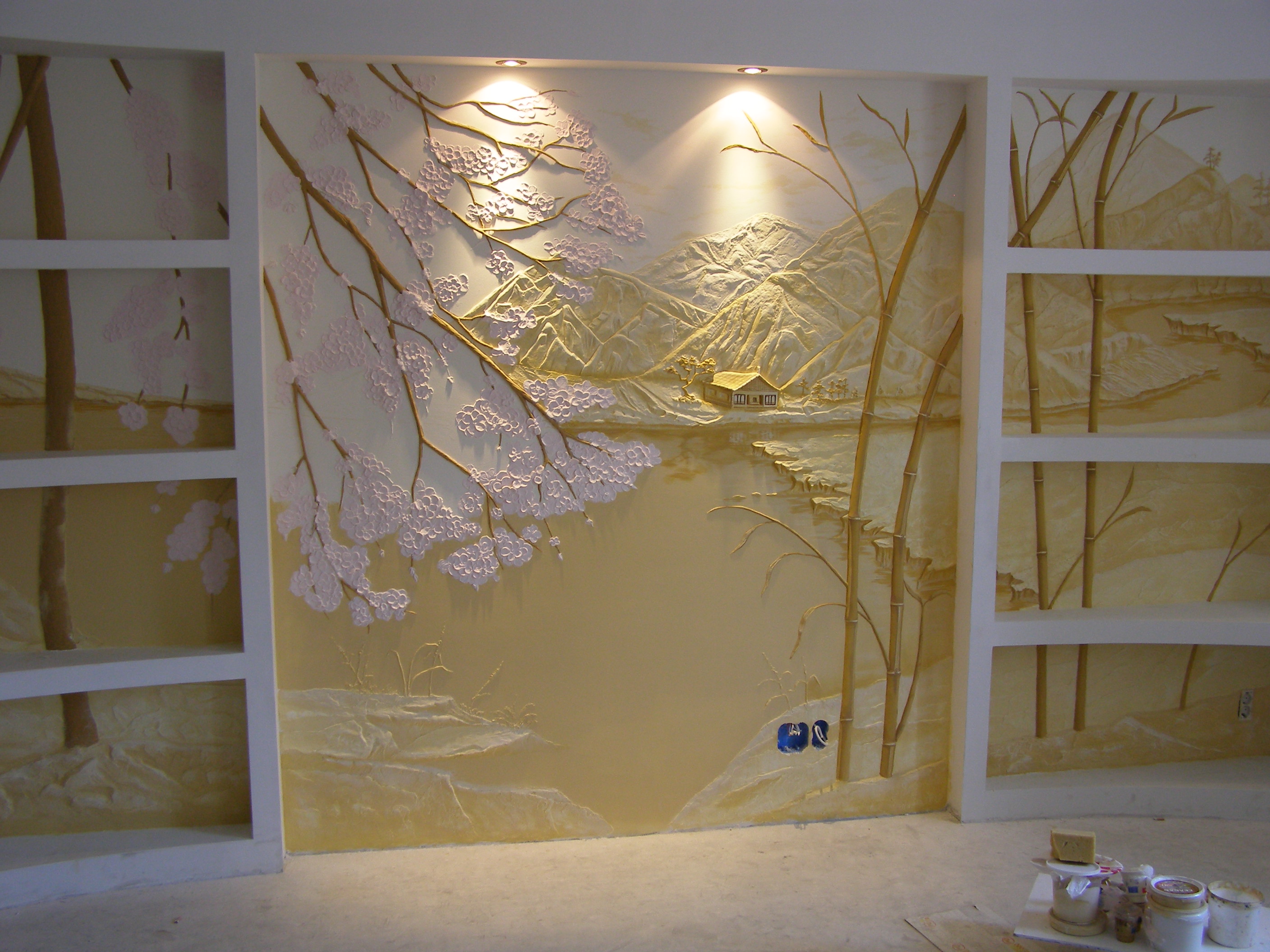
For the manufacture of textured plaster, it is necessary to prepare specific tools: trowel, a rough sponge applicators (textured rollers), brush or roller for the final paint coating.
In premises with a small area, fine-grained plaster is best seen, and in spacious areas it is large-scale plaster.
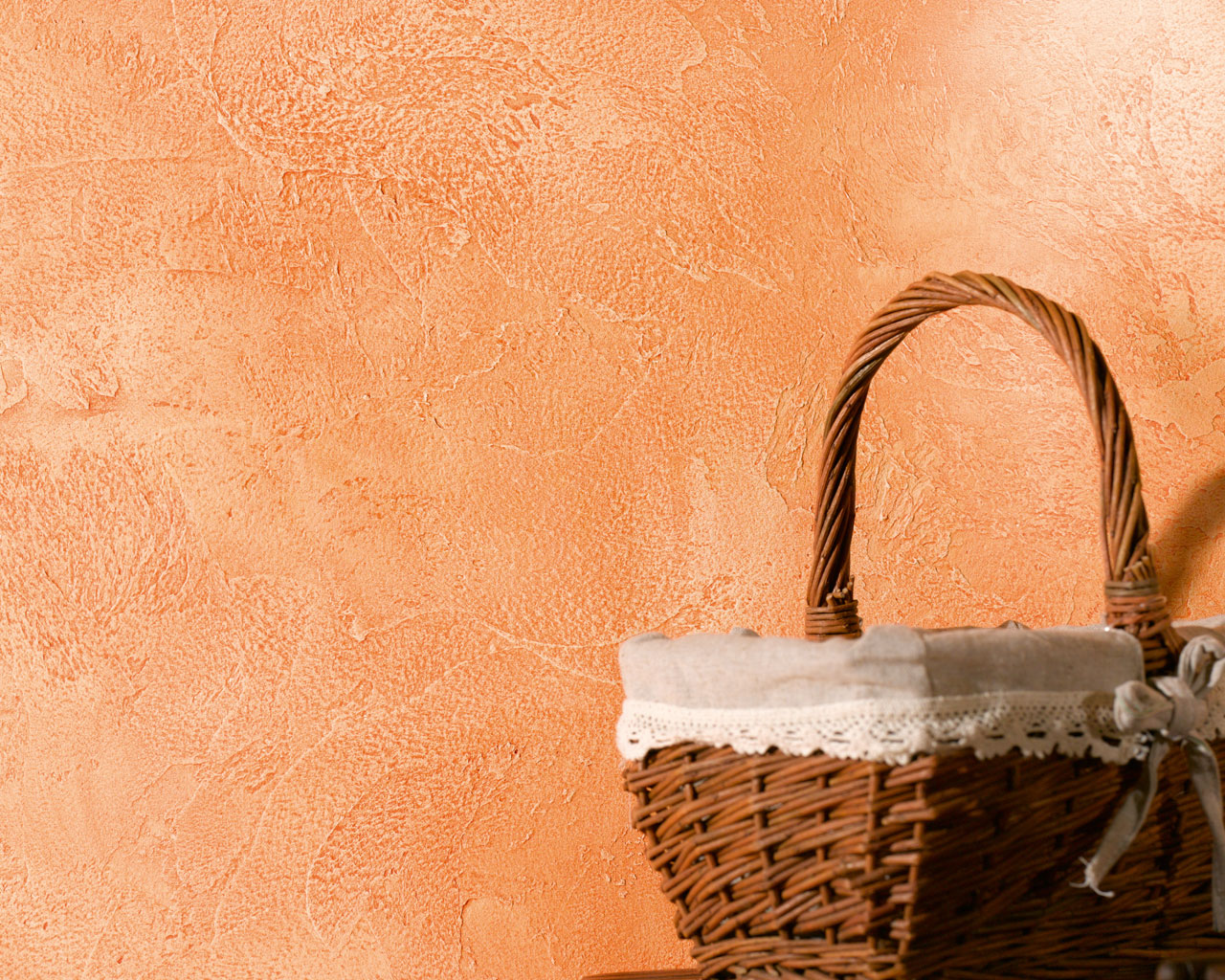
When preparing the surface for applying textured plaster, it is necessary to remove the old paint from the walls, align it and apply a primer and antifungal agent.
Textured plaster is applied from the upper corner of the wall, processing at a time the surface area of not more than two meters. The prepared solution is applied by the trowel, as they say, with one stroke, and then leveled. To make the relief, use a coarse sponge or, if desired, a textured roller. This should be done quickly and then, when the plaster solution just applied is not dry yet, constantly moistening the roller with water.
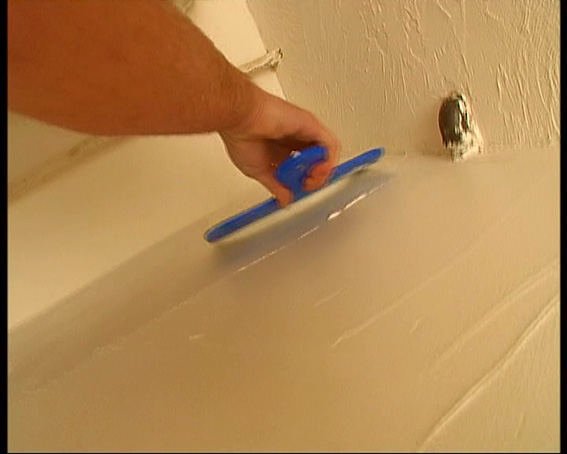
With the aim that the seams are imperceptible, the edges of the treated area should look as if they are torn. Process the next (adjacent) area, it is exactly the same, applying a portion of the solution to it and leveling it. When crossing the boundaries of the treated areas, special attention should be given to the joint.
Thus, the whole surface of the wall is treated. After two days, making sure that the solution has dried, the surface of the wall is treated with applied textured plaster, sandpaper. The movements during processing must be light and practically weightless, since it is necessary to remove only those particles that are not fixed during the decoration of the wall.
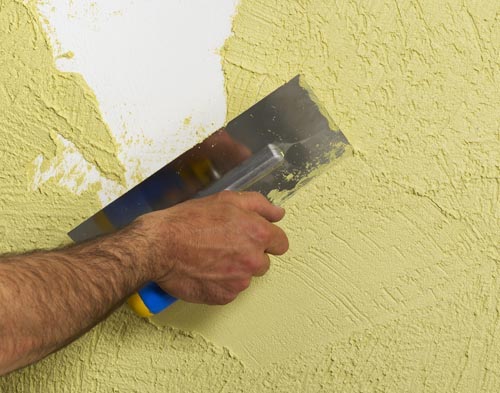
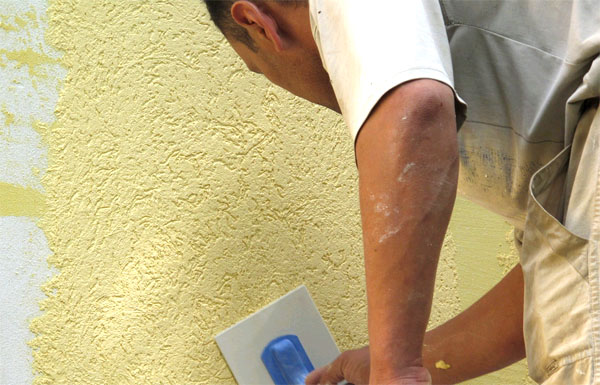
In the end, you can paint the wall, highlighting its texture even more, selecting the color in the tone of the entire interior of the apartment and, of course, a particular room.
If you plan to wash the wall afterwards with applied textured plaster, you can treat it with special wax. It will serve as a good protection and will extend the life of the walls in the room.



